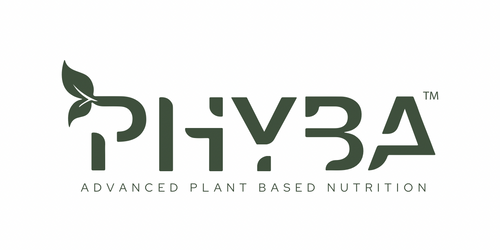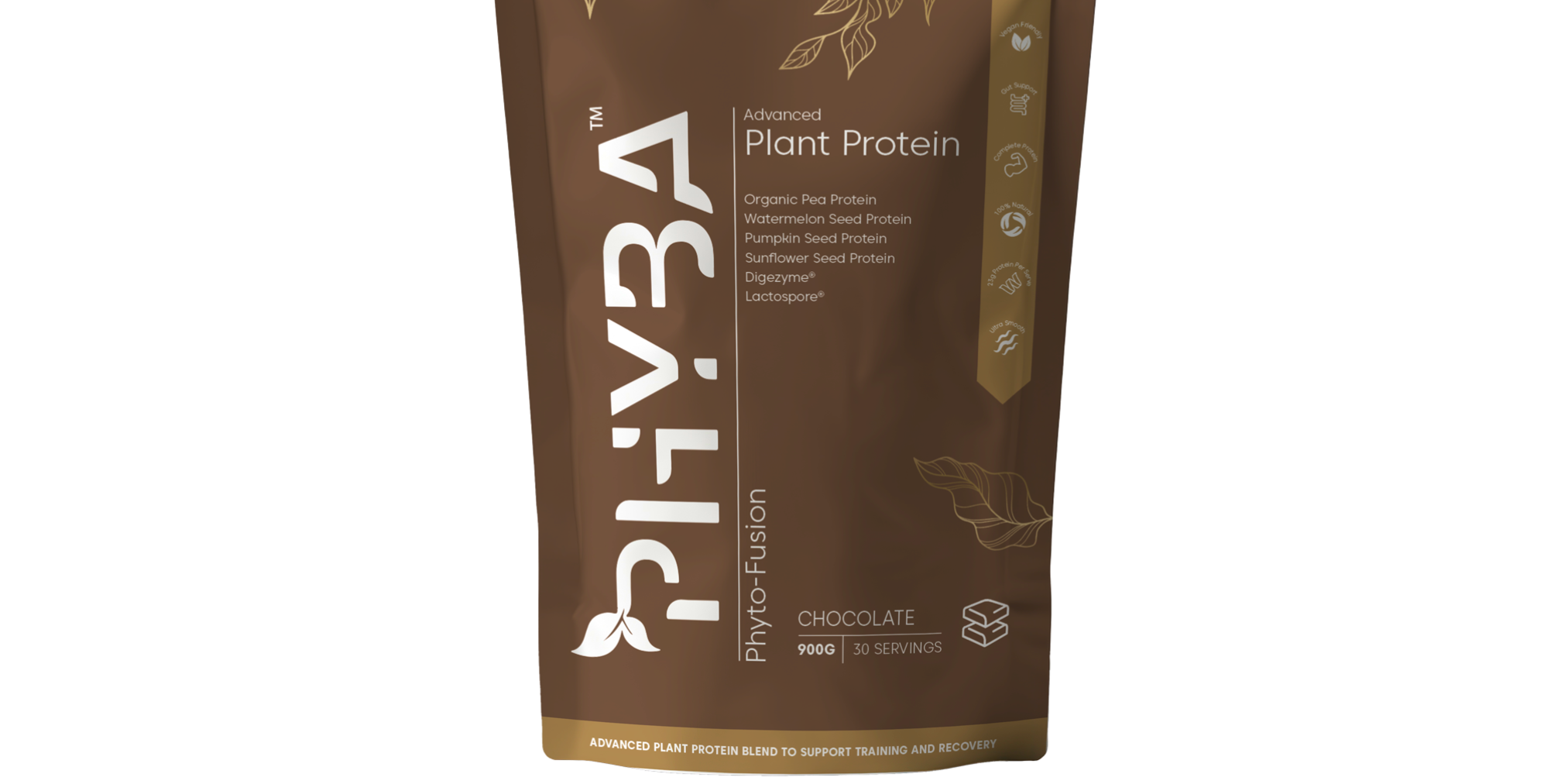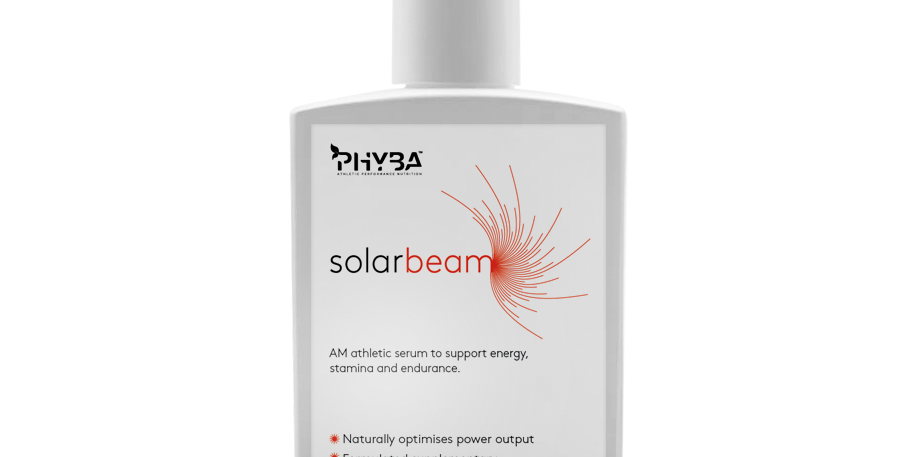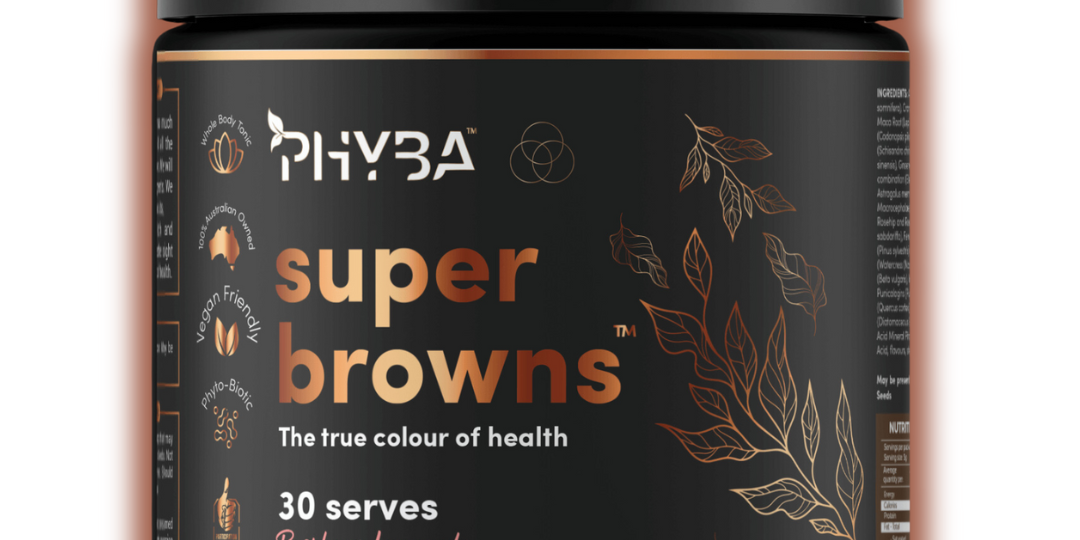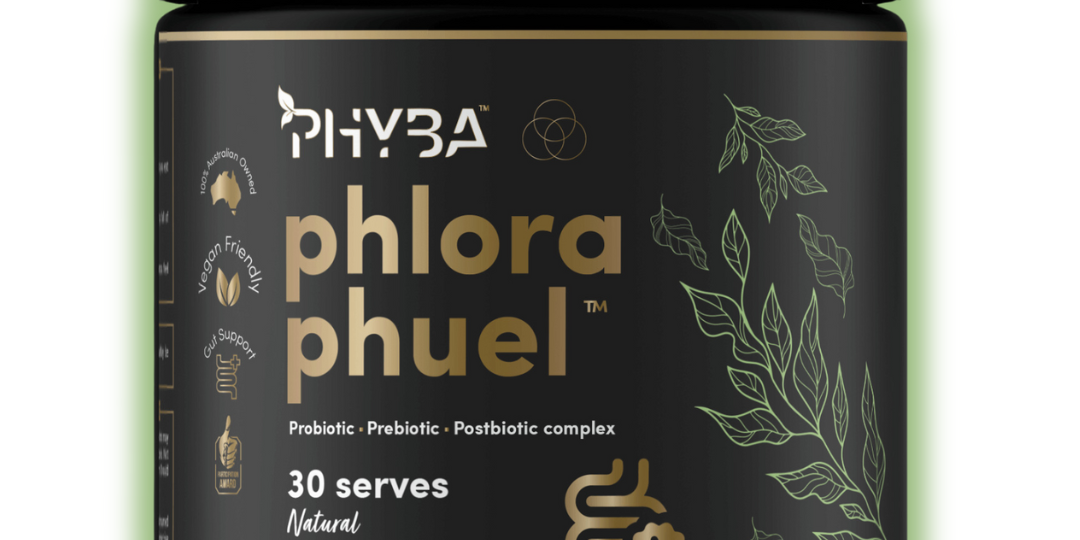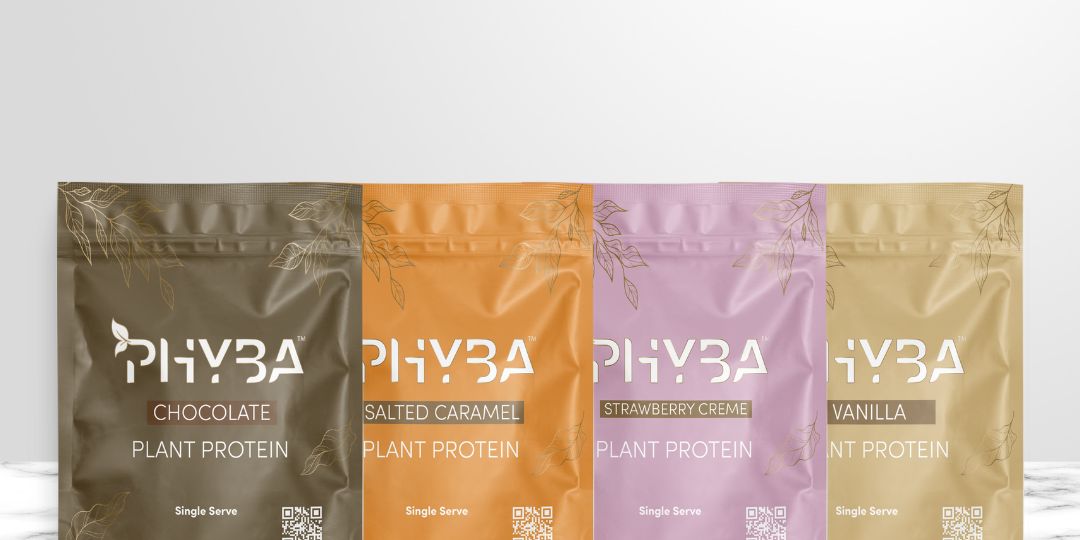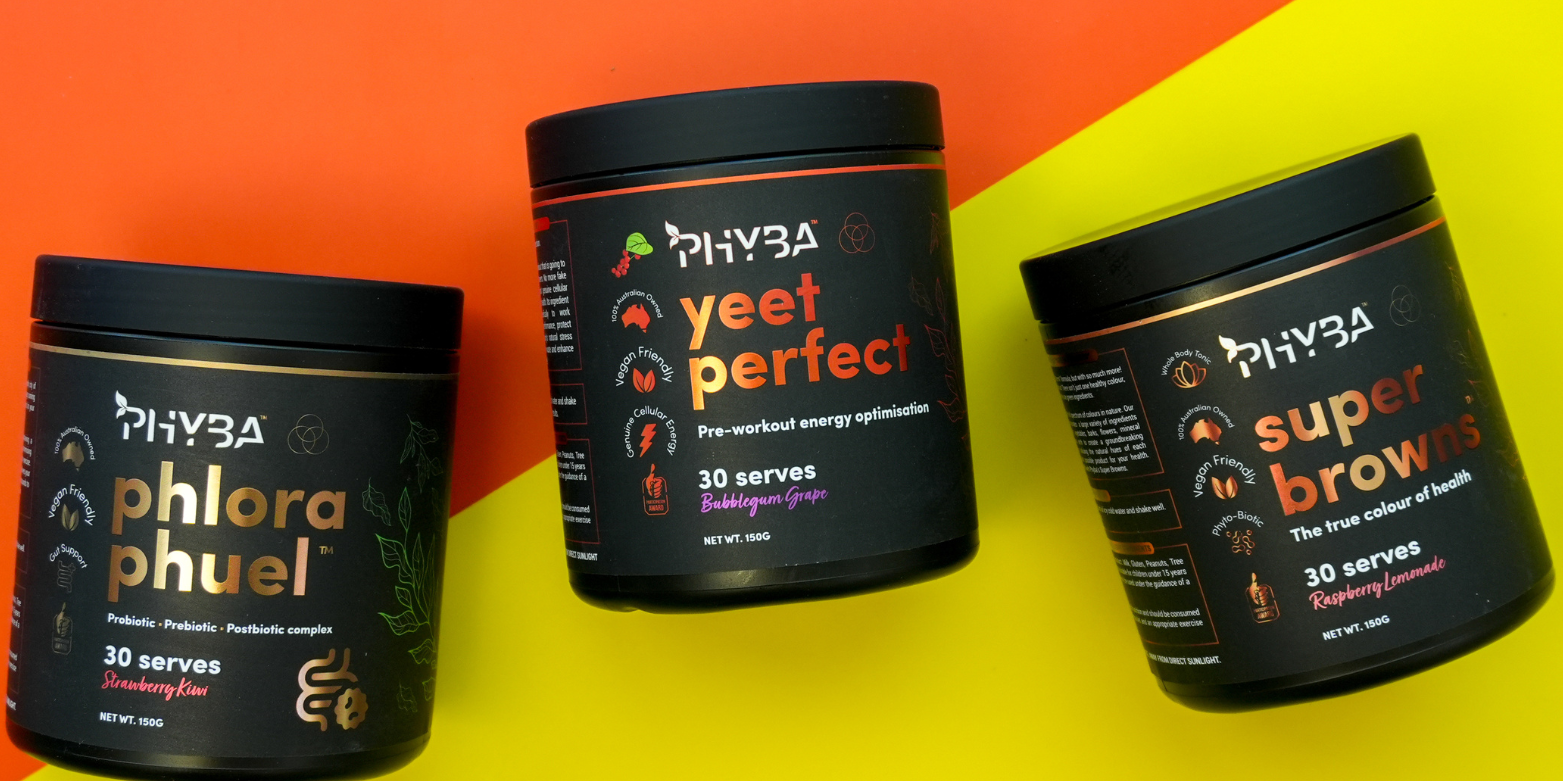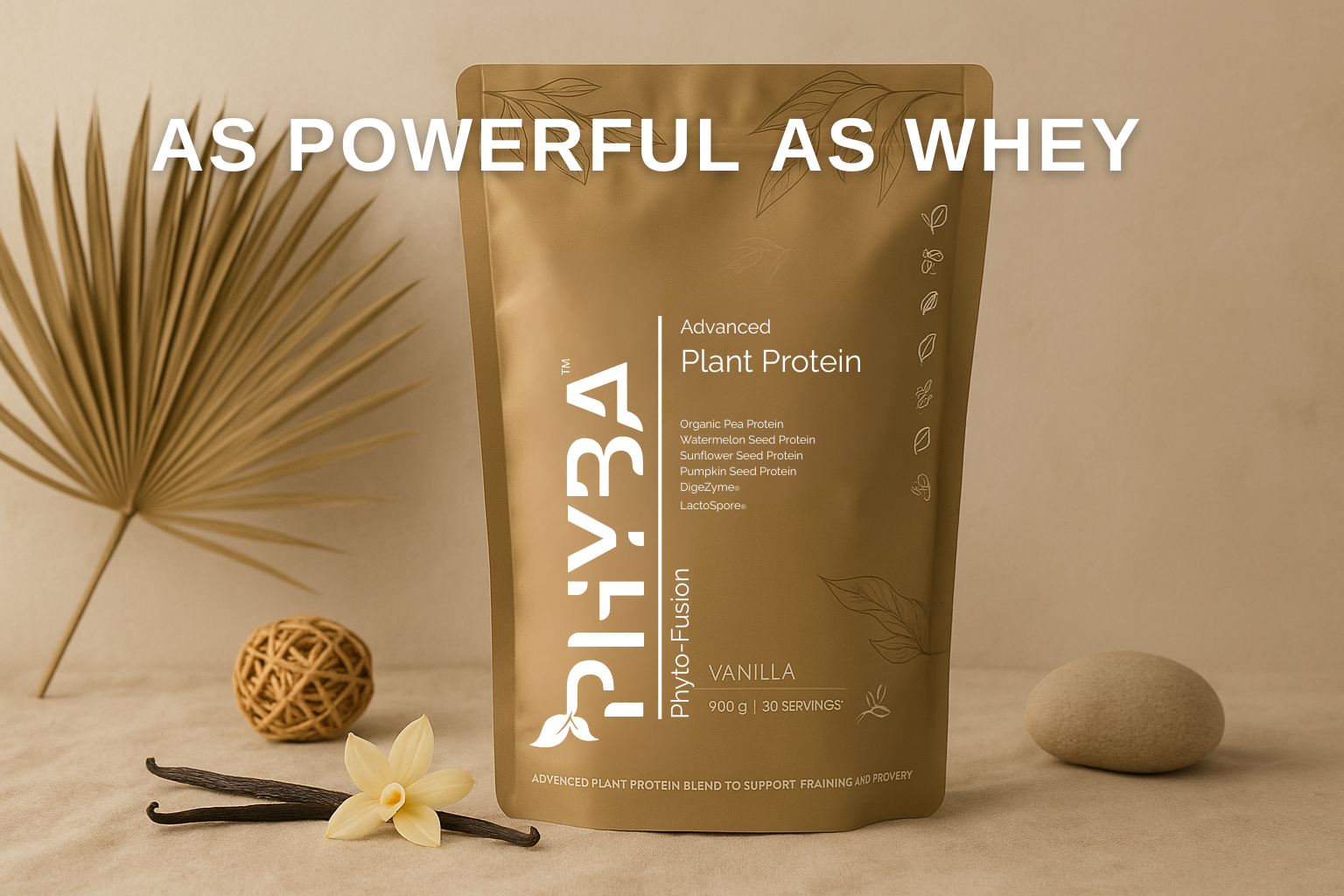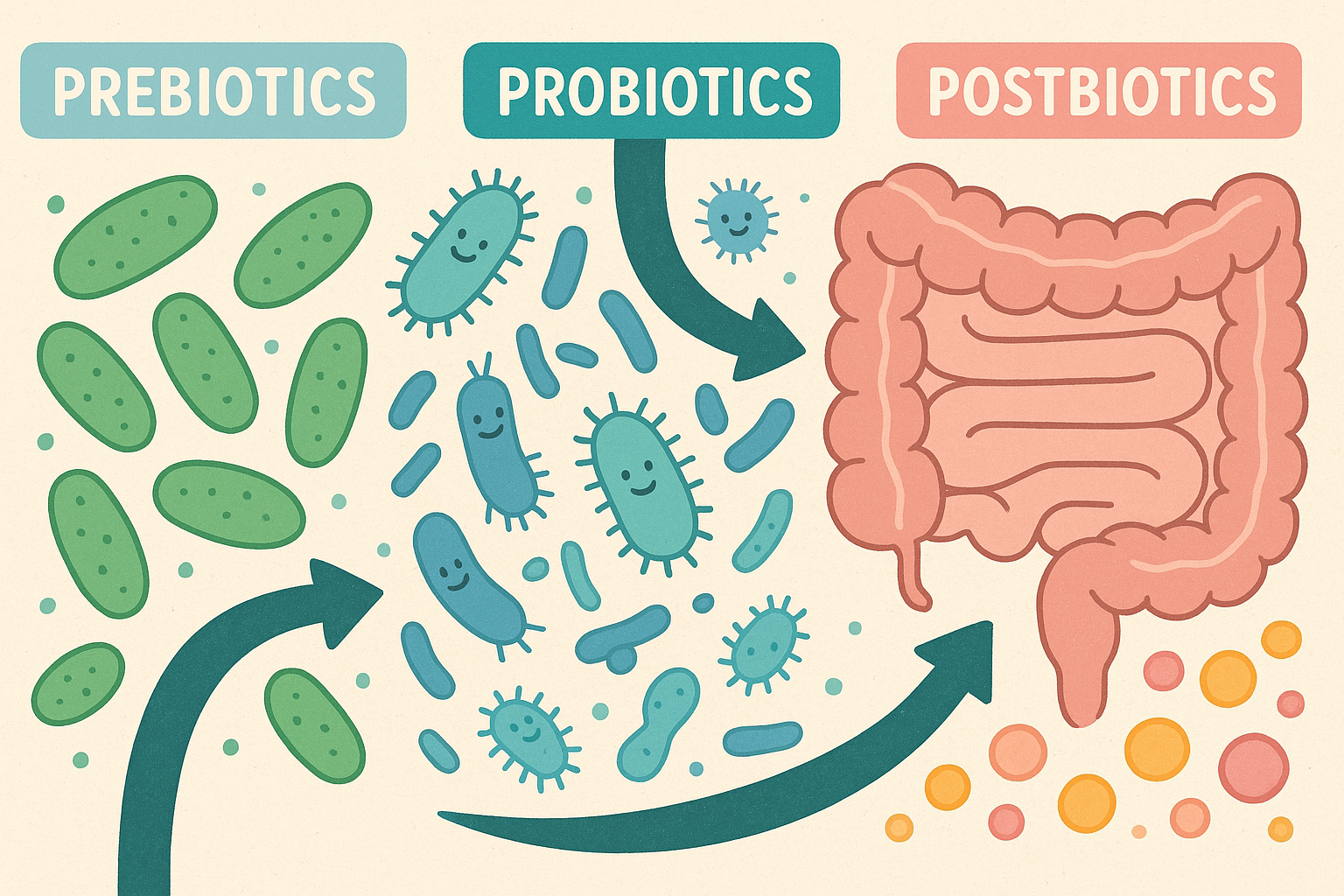Silicates, Oxalates, and Your Health: Navigating “Anti-Nutrients” on a Plant-Rich Diet
A health-conscious lifestyle often includes plenty of plant foods – understanding compounds like oxalates and silicates can help you enjoy these benefits while minimizing risks.
Image: A health-conscious individual enjoys a plant-rich meal after exercise.
Understanding Oxalates and Silicates
Oxalates (Oxalic Acid): Oxalates are organic acids naturally found in many plant foods – notably leafy greens (spinach, beet greens), certain vegetables, fruits, nuts, and seeds healthline.com. In plants, oxalic acid typically binds to minerals like calcium, forming oxalate salts. Oxalate is considered an antinutrient because it can interfere with nutrient absorption. For example, when you eat a high-oxalate food, the oxalate can bind to calcium or iron in your gut, forming compounds (like calcium oxalate) that your body can’t absorb healthline.com. This means nutrients in a high-oxalate food may be less available to you. Oxalate is also produced as a waste product by our own metabolism – even vitamin C can be converted into oxalate in the body healthline.compubmed.ncbi.nlm.nih.gov. Normally, oxalate is disposed of through stool and urine without issue healthline.com. However, in some individuals, consuming excessive oxalates or not clearing them properly can pose health concerns healthline.com.
Silicates (Silica): “Silicates” refers to a broad group of compounds containing silicon, oxygen, and often metals. The simplest form is silica (silicon dioxide), which is basically quartz or sand – a hard, inert substance. In the diet, silica can be present as a natural component of water (as soluble silicic acid) and in plant foods (many plants absorb silica from soil). In fact, silicon is the second most abundant element in Earth’s crust and small amounts of soluble silica (orthosilicic acid) are found in drinking water (typically 1–100 mg/L)pubmed.ncbi.nlm.nih.gov. Orthosilicic acid is the form our bodies can absorb, and once absorbed, silica is deposited in various tissues – it’s present in bones, tendons, skin, the aorta, and even the kidneyspubmed.ncbi.nlm.nih.gov. Unlike oxalate, silica/silicate isn’t usually labeled an antinutrient; it doesn’t chelate nutrients in the gut the way oxalate does. In fact, dietary silica is thought to have beneficial roles: research suggests it’s important for bone formation, collagen synthesis, and connective tissue healthpubmed.ncbi.nlm.nih.gov. Animals deprived of silica show weak joints and bones, hinting that silica is essential for normal developmentpubmed.ncbi.nlm.nih.gov. The good news is that silica from food and water has a very high safety margin – it’s largely inert and passes through. Toxicity from ingested silica is almost unheard of; studies in rodents found no harmful effects even at extremely high intake (the “no observed adverse effect level” was equivalent to an enormous 50,000 ppm in the diet)pubmed.ncbi.nlm.nih.gov.
Why Worry About Them? Oxalates and silicates come up in health discussions because in certain situations they can form crystals or “stones” in the body or hinder nutrition. Oxalates, when absorbed in high amounts, can bind with calcium in the kidneys and form calcium oxalate stones – the most common type of kidney stonehealthline.com. Silica, though usually benign, can also crystallize under rare circumstances: for instance, very high levels of silicon dioxide (from excessive supplement use or particular medications) have led to silicate kidney stones in a few casespubmed.ncbi.nlm.nih.gov. Additionally, both compounds are common in some high-fiber plant foods, and individuals on certain diets (or with specific health issues) might ingest large quantities. This is why understanding these compounds is important – so you can get the benefits of plant foods while avoiding potential pitfalls.
Health Risks of High Oxalate or Silicate Intake
Oxalate-Related Issues: For most people, oxalates in normal food portions are not harmful. However, a high-oxalate diet– especially in someone who is susceptible – can lead to problems. The clearest risk is the formation of kidney stones. Ordinarily, calcium and oxalate can coexist in urine without trouble, especially if urine volume is high (i.e. you’re well-hydrated). But when urine is concentrated or oxalate levels are excessive, calcium oxalate can precipitate out into tiny crystalshealthline.com. Over time, these crystals can grow into stones. About 80% of kidney stones are composed of calcium oxalatehealthline.com, underscoring oxalate’s role in stone disease. If a stone is small, you might not even know it’s there; larger stones, though, can cause severe pain, typically starting in the lower back or side and radiating to the groin. Other symptoms include nausea, blood in the urine, and frequent, painful urination when the stone passeshealthline.com. High oxalate intake has also been associated with other potential issues: because oxalate carries a negative charge, it preferentially latches onto positively charged minerals like calcium, magnesium, and iron, potentially contributing to mineral deficiencies if one’s diet is extremely oxalate-rich and low in those minerals healthline.com. For instance, spinach is rich in calcium, but much of that calcium is bound by oxalate and not absorbed healthline.com. Some individuals with malabsorptive gut conditions (like gastric bypass patients or those with inflammatory bowel disease) absorb more oxalate than usual, which can lead to kidney stones or even oxalate depositing in tissues (oxalosis) over time healthline.com. There have also been speculative links between oxalates and issues like joint pain, vulvar pain, or other chronic illnesses, but current research does not support claims that oxalates cause conditions like autism or chronic pain healthline.com. The primary scientifically established concern is kidney stone risk and nutrient bioavailability, not widespread systemic toxicity for otherwise healthy individuals.
Silicate-Related Issues: Silicates are less commonly discussed as a dietary hazard, because problems are rare. Our bodies handle typical silica intake very well – most silica either gets incorporated into tissues like bone (in small amounts) or is excreted. That said, there are a few scenarios where silicates could pose health issues. One is the formation of silicate kidney stones. While extremely uncommon in humans, there have been documented cases. For example, one case report described a woman who repeatedly developed pure silicate kidney stones; it turned out she was regularly consuming several over-the-counter supplements that used silica (silicon dioxide) as an additive pubmed.ncbi.nlm.nih.gov. When she stopped those supplements, her silicate stones stopped forming pubmed.ncbi.nlm.nih.gov. In animals like sheep and cattle, silica stones are more frequent (likely because grazing animals ingest a lot of soil and silicate-rich grasses), but in people it’s usually only seen under unusual circumstances (certain antacid medications in the past contained magnesium silicate and led to stone formation in a few patients, for instance). Apart from kidney stones, high levels of silicates might irritate the kidneys or bladder in some cases. Urinary tract symptoms of silicate stones would be similar to other stones – pain and urinary discomfort. Another possible issue is that unabsorbed silicates are very hard particles; theoretically, a very high intake of silicate-rich fiber (like eating huge quantities of unrefined grain husks) might cause some mechanical irritation to the gut. But this isn’t a common concern, since normal amounts in whole grains are well-tolerated (and fiber’s benefits far outweigh any theoretical risk from silicate residue). It’s worth noting that the majorhealth risk of silica is not dietary but respiratory – inhaling crystalline silica dust (as in certain occupational exposures) can cause serious lung disease (silicosis) pubmed.ncbi.nlm.nih.gov. That’s a different topic, but important to distinguish: eating silica in food is not the same as breathing in fine quartz dust. In summary, dietary silicate issues are rare; they mainly revolve around potential kidney stone formation when intake is abnormally high or water intake is very low.
Managing and Mitigating the Effects of Oxalates and Silicates
The good news is that you can enjoy oxalate- and silica-containing foods as part of a healthy diet by using some smart strategies. Here are evidence-based approaches to mitigate the potential negative effects of these compounds:
-
Stay Well Hydrated: The simplest and most effective step to prevent problems from both oxalates and silicates is to drink plenty of fluids (mostly water) throughout the day. Diluting your urine helps prevent crystallization of compounds. Higher urine volume means oxalate and silica are less likely to precipitate into stones kidney.org. Aim for at least 2 to 3 liters of fluid per day (unless your doctor advises otherwise) – enough that your urine stays a light yellow color. Adequate hydration also supports overall health and exercise performance, so it’s a win-win.
-
Pair Oxalate-Rich Foods with Calcium: It may sound counterintuitive, but consuming calcium with high-oxalate foods can actually reduce oxalate absorption. Calcium in the meal will bind to oxalate in the intestines, forming insoluble calcium oxalate that exits in stool rather than absorbing into the bloodstream kidney.orgkidney.org. For example, if you’re having a bowl of spinach (which is high in oxalate), tossing in some tofu (rich in calcium) or having a bit of cheese or a calcium-fortified plant milk with it can help the oxalate “team up” with calcium and safely leave your body kidney.org. The National Kidney Foundation explicitly notes that completely avoiding calcium to prevent stones is a mistake – in fact, too little calcium can increase stone risk, whereas getting calcium (preferably from foods) helps oxalate to be excreted safely kidney.org. Tip: If you’re dairy-free, consider calcium-fortified alternatives or calcium-rich plant foods (leafy greens, almonds, sesame, beans) to get this benefit.
-
Limit Extremely High-Oxalate Foods (If You’re Sensitive): Not everyone needs to obsess over oxalate content – and broadly cutting out all oxalate-rich veggies is not recommended for the general public kidney.org (you’d lose many nutrients). But if you have a history of calcium oxalate kidney stones or other oxalate-related issues, moderation is key. Know which foods are very high in oxalates and treat them as “occasional” ingredients or use smaller portions. Some of the top offenders include: spinach, beet greens, Swiss chard, rhubarb, starfruit, sorrel, bran flakes, sesame/tahini, and certain nuts like almonds and cashews kidney.org. You don’t have to avoid these entirely (they have good nutrients too); instead, maybe rotate your greens (e.g. use kale or bok choy – which are low in oxalate – on days you’re not eating spinach) and keep variety in your diet. If you do eat them, remember the calcium pairing trick. For example, enjoy a spinach salad with a calcium-fortified tofu dressing or add a spoon of yogurt.
-
Cook Your Greens and Veggies: How you prepare foods can make a big difference in their oxalate content. Cooking methods like boiling can significantly reduce oxalate levels in certain vegetables. Oxalates can be leached into the cooking water – one study found boiling reduced soluble oxalate by 30–87% in various veggies, whereas steaming only reduced it by 5–53% pubmed.ncbi.nlm.nih.gov. (The water used for boiling accumulates the oxalate, so remember not to use that water in sauces or soups if you’re trying to discard the oxalate.) For instance, boiling spinach and discarding the water can remove a large chunk of its oxalates pubmed.ncbi.nlm.nih.gov. This is useful if you need to lower oxalate intake but still want your greens. Lightly cooking or blanching high-oxalate vegetables also improves mineral availability (it frees some calcium and iron that were bound). Of course, balance this with nutrient loss – some vitamins may leach out with longer boiling, so don’t overdo it. Steaming is gentler on vitamins but less effective for oxalate removal. A good compromise is to boil leafy greens briefly, then toss them in fresh water or into your dish.
-
Avoid Mega-Doses of Vitamin C: Vitamin C is a healthy nutrient, but if you’re prone to kidney stones, be cautious with high-dose vitamin C supplements. The body can convert excess vitamin C into oxalate pubmed.ncbi.nlm.nih.gov, potentially raising urinary oxalate levels. The National Kidney Foundation advises stone formers to talk to their doctor before using high-dose vitamin C, as >1000 mg/day might increase stone risk kidney.org. Getting vitamin C from food (fruits and veggies) is generally fine – it’s hard to overdose from food alone. But think twice about taking large supplement doses (e.g. 2-3 gram mega-doses) unless there’s a medical reason. If you do need extra C (say, during cold season), drink extra water to help flush any oxalate.
-
Mind Your Mineral Balance (Calcium, Magnesium, Potassium): Ensuring adequate magnesium and potassium in your diet can help. Magnesium can bind oxalate similarly to calcium, forming magnesium oxalate which is quite soluble (and thus more easily excreted). Some studies have shown that supplementing with magnesium (often along with vitamin B6) dramatically reduced kidney stone recurrence in patients rejuvenation-science.comrejuvenation-science.com. Foods rich in magnesium include nuts, seeds, whole grains, and legumes – yet another reason a balanced plant-based diet can be protective. Potassium (abundant in fruits and veggies) helps citrate levels in urine, and citrate is a known inhibitor of stone formation (citrate grabs onto calcium, leaving less to bind with oxalate). In practice, diets emphasizing vegetables and fruits tend to raise urinary citrate, which is beneficial for preventing stones healthline.com. So, eating a variety of produce can naturally provide these protective factors.
-
Leverage Vitamin B6: Vitamin B6 plays a role in oxalate metabolism – it’s a cofactor that helps our body break down oxalate precursors. A large prospective study in women found that higher vitamin B6 intake was associated with a lower risk of kidney stones over 14 years pubmed.ncbi.nlm.nih.gov. Women consuming >40 mg of B6 per day had about a 34% lower risk of stones compared to those getting under 3 mg pubmed.ncbi.nlm.nih.gov. While most people don’t need that much B6 (the RDA is around 1-2 mg), this suggests that ensuring you’re not deficient in B6 could be helpful. B6 is found in many foods (tuna, poultry, bananas, chickpeas, potatoes, etc.), and it’s also in most multivitamins. If you have recurrent stones, your healthcare provider might suggest a B6 supplement. Typical “stone-prevention” doses are around 10-50 mg/day, which are safe and far below any toxic level. Always check with a doctor before high-dose B6, but know that normal dietary B6 is good for you in general.
-
Be Cautious with Silica Supplements: Unlike oxalate, you’re unlikely to ingest hazardous amounts of silicate from foods alone. However, pay attention to supplements or processed foods with added silica. Silicon dioxide is commonly used as an anti-caking or clarifying agent – in tiny amounts it’s harmless, but taking huge quantities of certain products could add up. For example, some people have tried eating diatomaceous earth (which is basically pure silica) or taking heavy doses of horsetail (an herb high in silica) for perceived health or beauty benefits. There’s limited evidence these provide significant benefits, and overdoing them could theoretically contribute to kidney stone formation. A published case in American Journal of Kidney Diseases documented a patient who developed silicate kidney stones due to over-the-counter supplements containing silica pubmed.ncbi.nlm.nih.gov. The problem resolved when she stopped taking those products pubmed.ncbi.nlm.nih.gov. The takeaway: follow supplement directions and don’t exceed recommended doses, especially for products containing silicates. If you’re not sure how much silica you’re consuming from powders or supplements, consult a healthcare professional.
-
Moderate Dietary Oxalate When Necessary, Not Excessively: If you have had kidney stones, your doctor may recommend a “low-oxalate diet,” typically defined as <100 mg oxalate per day healthline.com. This isn’t no oxalate (which would be impractical), just a reduction. But importantly, experts no longer automatically recommend low-oxalate diets for everyone with stones healthline.com – about half of urinary oxalate comes from the body’s own production, not food healthline.com. So, if you haven’t had a problem, you probably don’t need to micromanage oxalates. And even if you are a stone-former, you should still eat veggies – just be strategic. As one kidney specialist mantra puts it: “Don’t cut out oxalate or calcium completely; instead, include them together.” In other words, balance is key. Enjoy a varied diet with oxalate-rich and oxalate-poor foods, and use the above tactics (hydration, calcium pairing, cooking methods) to keep things in check.
By implementing these steps, you can greatly reduce any risks associated with oxalates and silicates while still consuming a broad, healthy diet. Now, with those concerns managed, let’s look at the positive side of the equation – all the benefits that those veggies, greens, nuts, and seeds bring to the table.
The Upside: Benefits of a Diverse Plant-Rich Diet
It’s easy to focus on what can go wrong, but remember that plant foods offer tremendous benefits that far outweigh the risks of compounds like oxalate. In fact, eating a diverse, plant-rich diet is one of the best things you can do for your health, longevity, and even athletic performance. Let’s explore some of these advantages:
1. Improved Overall Health and Longevity: Populations with diets centered around vegetables, fruits, whole grains, legumes, and nuts consistently show better health outcomes and longer lifespans. Large epidemiological studies have found that people adhering to predominantly plant-based diets have lower rates of heart disease, obesity, type 2 diabetes, and even certain cancers pubmed.ncbi.nlm.nih.gov. They also tend to live longer. For example, a recent review noted that Western diets high in meat are associated with higher mortality, whereas plant-focused diets are linked to lower all-cause mortality (fewer deaths from any cause) pubmed.ncbi.nlm.nih.gov. In the famous Adventist Health Study, tens of thousands of participants who followed a vegetarian or vegan diet had significantly lower mortality rates and a higher life expectancy than their meat-eating counterparts uclahealth.orguclahealth.org. Similarly, Harvard researchers analyzing multiple long-term studies reported that even small shifts toward plant proteins can pay big dividends. Replacing just 3% of daily calories from animal protein with plant protein was associated with a 10% drop in overall mortality risk in one analysis health.harvard.edu. In practical terms, that could be as simple as swapping a few ounces of red meat for a serving of beans or lentils in your meal. The longevity benefits likely come from multiple factors: plants are packed with antioxidants, vitamins, minerals, and fiber that protect against chronic disease. They also lack the harmful saturated fats and compounds found in processed meats that can contribute to illness. The fiber in plant foods helps maintain healthy cholesterol and blood sugar levels, feeds beneficial gut bacteria, and aids in weight management – all contributors to long-term health. It’s not necessary to be 100% vegetarian to gain these benefits; rather, the key is to make plant foods the star of your plate more often than not. By doing so, you’re nourishing your body with the fuel that human biology seems to thrive on.
2. Anti-Inflammatory and Heart Health Benefits: Many plant foods actively fight inflammation in the body. They contain phytochemicals (like flavonoids, carotenoids, and polyphenols) that function as antioxidants, mopping up harmful free radicals and reducing oxidative stress. Chronic inflammation is linked to diseases from heart disease to arthritis, and a plant-rich diet naturally combats this. For instance, fruits and vegetables high in vitamin C and other antioxidants help quench inflammation after hard workouts uclahealth.org and may speed up recovery. Diets high in fiber and unsaturated fats (from nuts, seeds, avocados) are known to lower LDL “bad” cholesterol, improve blood pressure, and keep blood vessels flexible. The result is a significantly lower risk of cardiovascular disease in plant-forward eaters pubmed.ncbi.nlm.nih.gov. In fact, some studies suggest that shifting toward plant-based eating can not only prevent but even reverse some markers of heart disease. By emphasizing plants, you’re also likely eating fewer processed foods and less salt, which further benefits blood pressure and heart health. This heart-protective effect contributes to longevity as well – cardiovascular disease remains the top cause of death, so any diet that slashes that risk will boost life expectancy.
3. Enhanced Sports Performance and Recovery: There’s a growing interest in plant-rich diets among athletes and fitness enthusiasts – and for good reason. Far from hindering performance, a well-planned plant-based diet can improve endurance, reduce recovery times, and support muscle health. One reason is the naturally high carbohydrate content of many plant foods (think whole grains, fruits, starchy veggies), which is ideal for fueling workouts and stocking glycogen in muscles. Research indicates that vegetarian and vegan diets do not impair athletic performance; if anything, they might confer advantages in endurance sports by improving aerobic capacity when carbs are abundant pmc.ncbi.nlm.nih.gov. Moreover, plants provide a bounty of nutrients that aid performance: dietary nitrates, found richly in beets, spinach, arugula, celery, and lettuce, are known to boost nitric oxide production in the body. Nitric oxide dilates blood vessels, increasing blood flow and oxygen delivery to muscles lboro.ac.uk. Studies have shown that nitrate supplementation (for example, beetroot juice) can improve exercise efficiency and stamina, essentially helping athletes use less oxygen at a given workload lboro.ac.uklboro.ac.uk. In practical terms, eating nitrate-rich veggies may translate to a few extra seconds or minutes of improved performance in cardio activities and a faster recovery of muscle energy. Additionally, the anti-inflammatory compounds in plants help with muscle recovery. After intense exercise, the body experiences muscle tissue micro-tears and oxidative stress. Antioxidant- and polyphenol-rich foods like berries, cherries, turmeric, leafy greens, and green tea can accelerate the reduction of muscle soreness and inflammation uclahealth.org. Tart cherry juice, for instance, has been shown in studies to reduce post-workout muscle pain (thanks to anthocyanins in cherries). Plant-based diets also tend to improve blood viscosity and circulation (since they’re low in viscous saturated fats), meaning oxygen and nutrients get to muscles more easily. Many elite athletes – from ultramarathoners to champion weightlifters – have adopted predominantly plant-based diets and report excellent performance, endurance, and quicker healing of injuries. As long as you get enough protein and calories (which you absolutely can from plant sources like legumes, tofu, tempeh, seitan, nuts, etc.), a plant-rich diet can meet the demands of heavy training. In short, plants provide clean-burning fuel and protective nutrients that can give active individuals an edge.
Whole, plant-based meals offer a powerhouse of nutrients. Incorporating a colorful variety of vegetables, fruits, whole grains, legumes, nuts, and seeds can improve heart health, support athletic performance, and promote longevity.
Image: A balanced Buddha bowl with quinoa, tofu, chickpeas, and a rainbow of veggies – exemplifying a nutrient-dense, plant-rich meal.
4. Diverse Nutrition for Overall Wellness: A diverse plant diet means you’re eating an array of different foods – and this diversity is crucial. Different plants offer different vitamins and minerals (for example, oranges for vitamin C, leafy greens for vitamin K, beans for magnesium and iron, etc.), so eating a mix ensures you cover your nutritional bases. Moreover, diversity in plant intake has been linked to a healthier gut microbiome. The fiber in plant foods isn’t just one kind – there are many types (soluble, insoluble, prebiotic fibers like inulin, resistant starches, etc.), and a variety of fiber sources feeds a wider range of beneficial gut bacteria. A well-fed microbiome produces compounds that can reduce inflammation, improve immunity, and even influence mood and metabolism. One large-scale microbiome study found that people who ate more than 30 different plant foods per week had a significantly more diverse gut microbiota than those who ate 10 or fewer types uclahealth.org (diversity in the microbiome is associated with better health). Essentially, each plant is like a different workout for your gut microbes, keeping them adaptable and robust. By enjoying a diversity of whole plant foods, you’re likely to get plenty of fiber (which most of us need more of for healthy digestion and cholesterol levels) and a balance of macro- and micronutrients.
Plant-Powered Eating: Tips and Examples for a Balanced Diet
Putting it all together, here are some practical dietary tips and meal ideas that emphasize the benefits of plant-rich eating while keeping oxalates and silicates in check. The goal is to maximize nutrition and enjoyment, not to obsess over any one compound.
-
“Eat the Rainbow” Every Week: Strive to include a variety of colors in your diet, as each color often represents different nutrients and antioxidants. For example, dark green veggies (kale, broccoli, bok choy) are rich in folate, calcium, and carotenoids; orange foods (sweet potatoes, carrots, pumpkin) provide beta-carotene and potassium; red/purple foods (berries, red cabbage, beets) are packed with anthocyanin antioxidants. A simple way to do this is to vary your produce picks when grocery shopping. One week, you might get spinach and red peppers; the next week, chard and eggplant. This naturally rotates high-oxalate and low-oxalate foods. Example: Toss together a salad with mixed greens (some spinach for oxalate tolerance training, plus lettuce and arugula which are low in oxalate), shredded red cabbage, grated carrots, cherry tomatoes, and avocado. You’ll get a spectrum of nutrients and a delicious mix of textures.
-
Balanced Bowls for Meals: One easy template for a plant-powered meal is the “Buddha bowl” concept – essentially a bowl composed of a whole grain, a protein, and assorted veggies, topped with a tasty sauce. This format inherently gives you diversity. Example: A quinoa bowl with roasted sweet potatoes and steamed broccoli(both low in oxalate), a handful of chickpeas and grilled tofu (for protein and calcium), sprinkled with sunflower seeds. Drizzle with a lemon-tahini dressing (tahini is high in oxalate, but we’re using just a tablespoon or two; plus the calcium in tahini and tofu helps bind some of it). This single bowl hits multiple nutritional goals: high fiber, plenty of plant protein, healthy fats, and a range of vitamins. Quinoa and broccoli provide magnesium, the tofu and broccoli provide calcium, and the meal as a whole is rich in potassium – all nutrients that help keep oxalate issues at bay while fueling your body.
-
Include Oxalate “Neutralizers”: When you eat foods higher in oxalate, combine them with foods that counteract any negative effects. Example: If you love sautéed spinach, cook it with some olive oil and garlic, and sprinkle with crushed almonds or sesame seeds (for added calcium and magnesium). Or enjoy a spinach side dish alongside a main course of calcium-set tofu or a creamy almond sauce. If you make a green smoothie with spinach or beet greens, blend in some calcium-fortified plant milk or a spoon of almond butter to add calcium. Also, don’t forget a source of vitamin B6 – maybe a banana or some flaxseeds in that smoothie – to aid oxalate metabolism. This way, you still get the iron, folate, and antioxidants from the high-oxalate greens, but you’ve built a more oxalate-aware meal matrix around them.
-
Leverage Plant Protein for Performance: To support workouts or an active lifestyle, build meals around plant proteins and complex carbs. Example: For a post-workout dinner, make a hearty lentil and vegetable stew. Lentils are packed with protein, iron, and magnesium; add diced tomatoes, carrots, and bell peppers for vitamin C (which will enhance the iron absorption from lentils). Serve it over a bed of brown rice or with a side of whole-grain bread to replenish glycogen. This meal provides quality protein for muscle repair, carbs for energy, and a ton of micronutrients. Another idea: chickpea pasta (higher protein than regular pasta) tossed with a sauce loaded with veggies like zucchini, broccoli, and cherry tomatoes, plus a sprinkle of nutritional yeast (for B-vitamins and a cheesy flavor). It’s satisfying and great for recovery. Such meals show that you can absolutely meet protein needs with plants – plus you get the bonus of fiber and phytonutrients that animal foods lack.
-
Smart Snacking: Choose snacks that contribute to your nutrient goals. Instead of oxalate-heavy potato chips or crackers, try a mix of raw veggies with hummus. Carrot and celery sticks, cucumber slices, or bell pepper strips with hummus provide fiber, hydration, and protein. Hummus (made from chickpeas and tahini) has some oxalate, but also calcium and magnesium, balancing the equation. Trail mix is another option: a handful of nuts (almonds, walnuts) and dried fruit gives healthy fats, magnesium, and antioxidants. Nuts, in particular, have been associated with lower mortality and better heart health in studies nejm.org, so a daily handful is a great habit. Just be mindful of portion sizes with nuts, since they are calorie-dense (a quarter cup is a reasonable serving).
-
Herbs, Spices, and Fermented Foods: Enhance both flavor and health by using herbs and spices liberally – turmeric, ginger, garlic, rosemary, oregano, cinnamon, etc., each have unique anti-inflammatory or antioxidant properties. For instance, turmeric’s curcumin compound is a potent anti-inflammatory (just pair it with black pepper to boost absorption). These can help counteract any mild pro-inflammatory effects if you do consume some oxalate crystals. Fermented foods like kombucha, kefir, sauerkraut, or kimchi can introduce beneficial bacteria that might even help degrade oxalates in the gut (certain Lactobacillus species can break down oxalate). While more research is ongoing, a healthy gut microbiome is generally a friend to those prone to stones, as specific gut bugs (like Oxalobacter formigenes) actually consume oxalate as their food. Including a variety of fermented plant foods might support a microbiome that keeps oxalate absorption in check.
-
Enjoy Some Oxalate-Rich Superfoods in Moderation: Some of the highest-oxalate foods are also nutritional powerhouses – for example, nuts and seeds (almonds, sesame) and cocoa (dark chocolate) are moderately high in oxalates, yet we don’t want to shun them entirely because they provide magnesium, healthy fats, polyphenols, etc. The key is portion and context. Have a few squares of dark chocolate after a balanced dinner (the calcium from your meal will bind some of its oxalates). Sprinkle just a tablespoon of flaxseed or chia seed (both low in oxalate, by the way) along with that tablespoon of almond butter in your oatmeal, instead of a large handful of only almonds. This way you get a spectrum of nutrients without concentrating any single anti-nutrient too much.
In summary, by embracing a diverse plant-rich diet, you’re giving your body a tremendous array of nutrients that promote health, energy, and longevity. Compounds like oxalates and silicates are just one factor in the grand scheme. With the strategies outlined – staying hydrated, balancing food combinations, and maintaining variety – you can confidently enjoy your green smoothies, grain bowls, and big salads. The science strongly supports that those who eat more plant foods tend to be healthier and live longer than those who don’t pubmed.ncbi.nlm.nih.govuclahealth.org. Even athletes are finding performance perks from plant-powered nutrition, thanks to improved blood flow and recovery lboro.ac.ukuclahealth.org. So, rather than viewing oxalates and silicates as boogeymen lurking in your veggies, see them as manageable parts of a healthy diet. With a bit of knowledge and balance, you can have the best of both worlds – reaping all the benefits of a nutrient-dense, plant-forward diet while minimizing any downsides.
Take-Home Message: Enjoy a colorful, varied plant-centric diet for optimal health and athletic performance. Don’t be afraid of foods that contain oxalates or silicates; instead, handle them smartly. Stay hydrated, pair and prepare foods in ways that reduce any risks, and ensure you get enough calcium, magnesium, and other key nutrients. Your body will thank you with better health, and you’ll likely feel the difference – more energy, quicker recovery, and the peace of mind that you’re doing something great for your long-term well-being. Here’s to a vibrant life fueled by plants!
